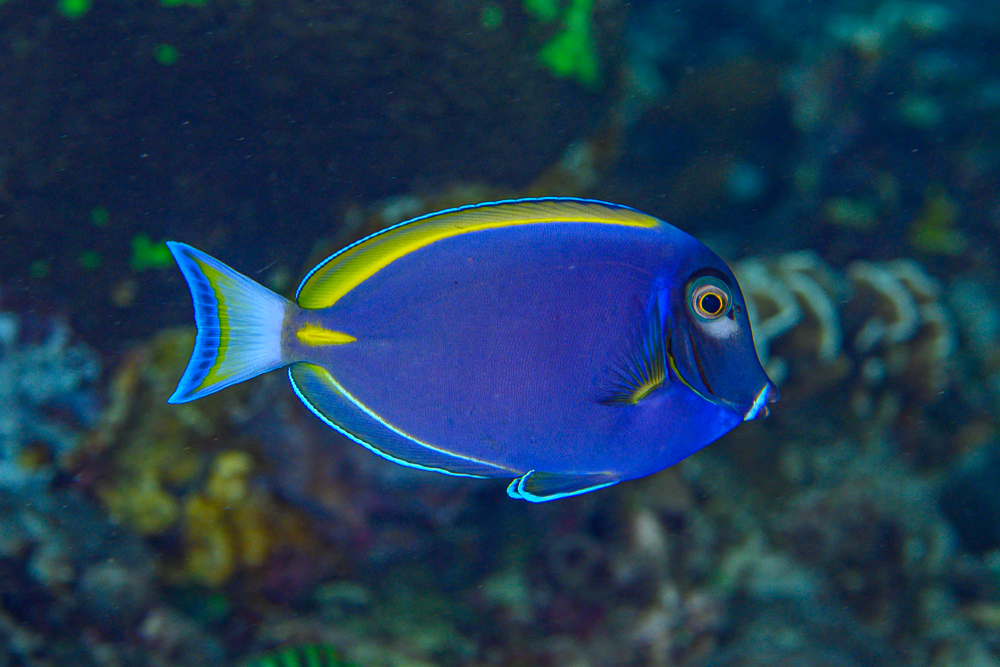
The Powder Blue Tang (Acanthurus leucosternon) is a very common and charismatic fish in the aquarium trade, but also in all the diving locations within the Indian Ocean. This very aggressive, high-intensity—but also very sensitive—fish is a true beauty of our oceans and an iconic fish in many aquariums.
The far east range:
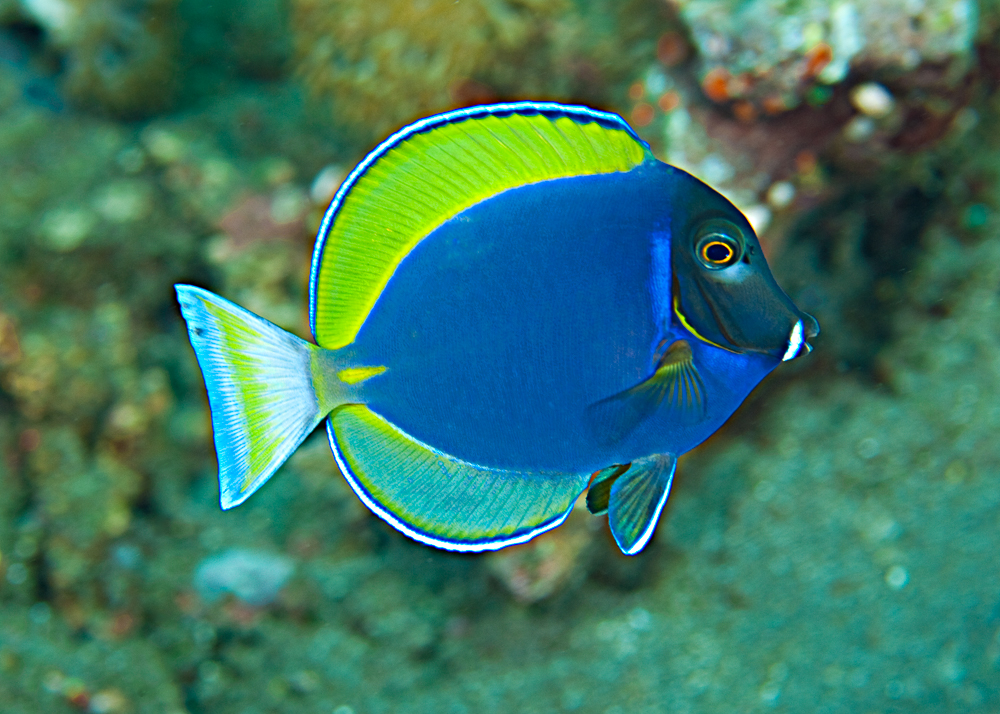
Bali is the eastern end of the Powder Blue Tang (Acanthurus leucosternon) range. It seems that the deep and wide Lombok Strait between Bali and Lombok, which draws the Wallace Line between Asia and Australia, didn’t only stop terrestrial species from moving east. This deep divide, characterized by enormous currents from the Indonesian Throughflow, also stopped some fish from moving east.
A normally schooling fish:
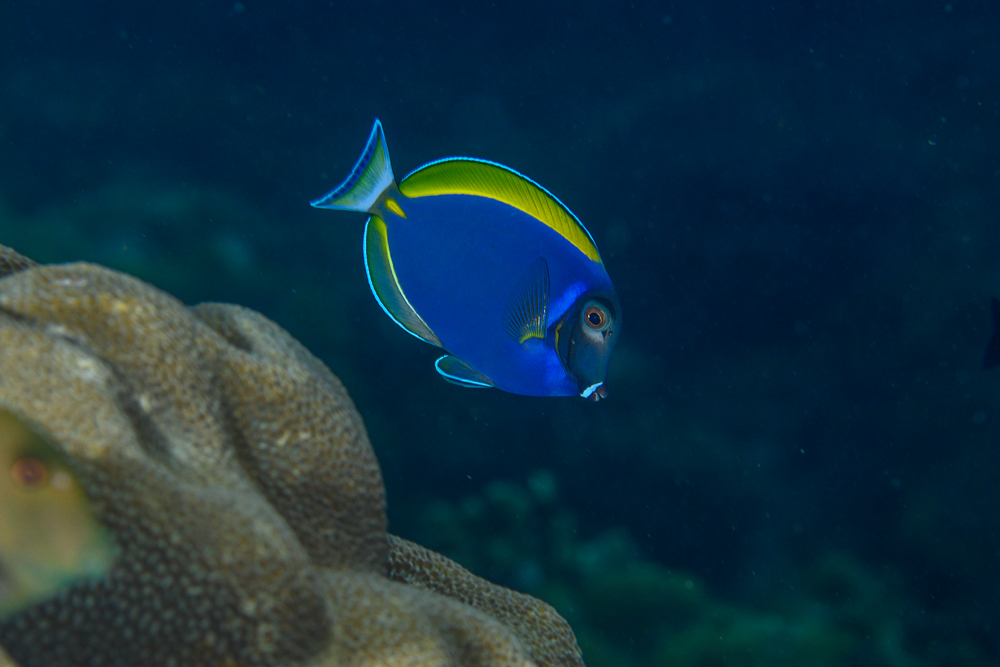
The Powder Blue Tang often schools in large groups in most of its location range around the Indian Ocean. However, here in Bali on the eastern part of its range, it is not found in sufficient densities to actually form groups. We mainly encounter solitary fish. This is also the case all along the South Java, Indian Ocean coast.
A close resemblance in White Cheek Surgeonfish (Acanthurus nigricans):
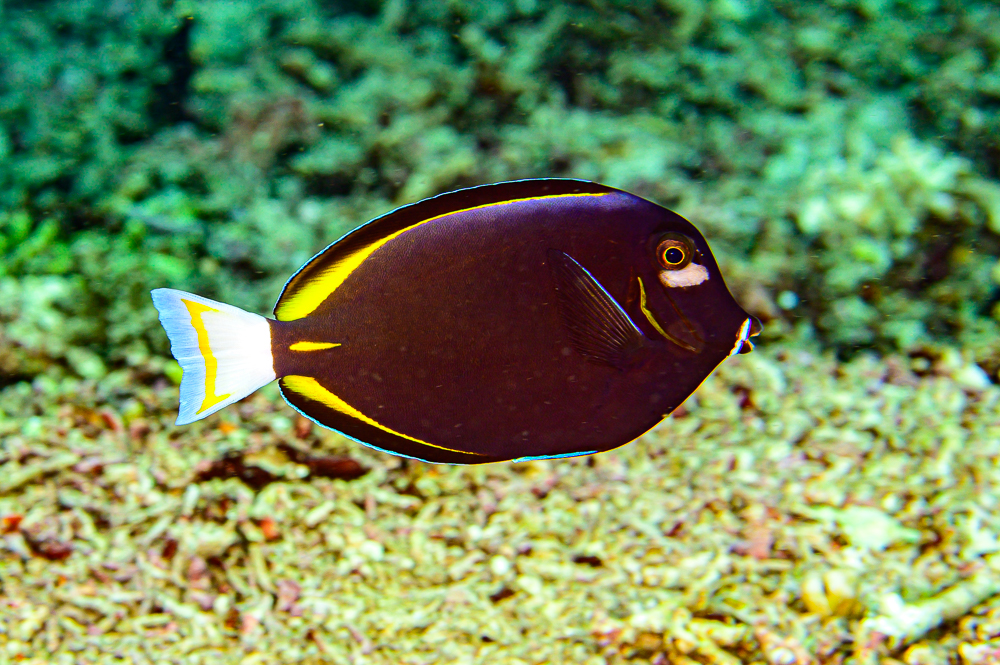
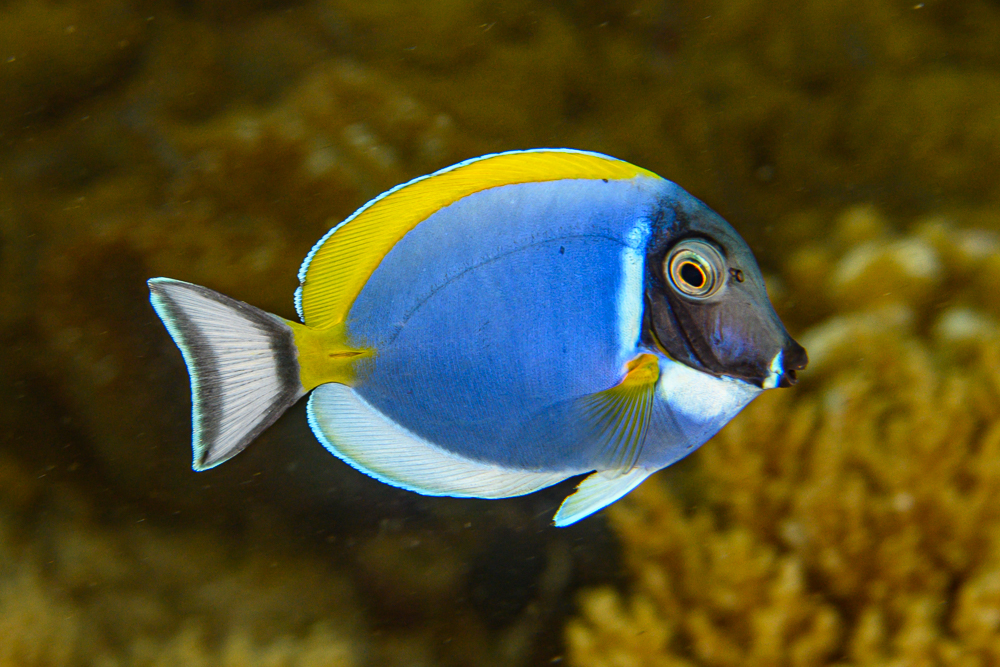
At the extreme eastern tip of its range, Acanthurus leucosternon meets with another closely related species: Acanthurus nigricans, the White Cheek, Whitecheeked, or Goldrim Surgeonfish. In this part of its range, the White Cheek Tang is quite common. The solitary Acanthurus leucosternon (Powder Blue Tang) seems to often have no other option than to breed with or join in spawning with Acanthurus nirgricans (White Cheek Surgeonfish). This leads to quite a lot of hybrid between the two species in that particular area. The resultant hybrids are pretty distinctive and are generally be more or less darker versions of the A. leucosternon parent.
Currents and back eddies seem to trap the larvae there:
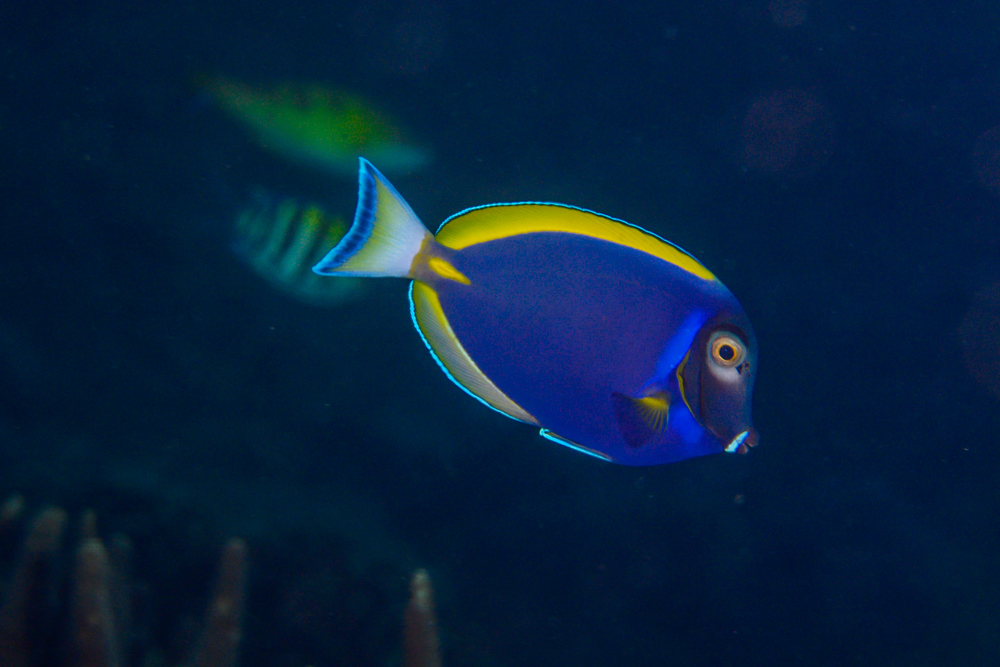
Species of surgeonfish have a long larval stage phase. Therefore, larvae usually travel quite far away from where they are spawned.
But there is another phenomenon at play that may increase the settlement of juveniles close to where their parents mated. There is a back eddy created in the southeast of Bali by the Indonesian Throughflow, flowing through the Lombok Strait between Bali and Lombok. We also see this phenomenon with coral larvae. As a result, many of these hybrid surgeonfish larvae could end up trapped in that area and settle there.
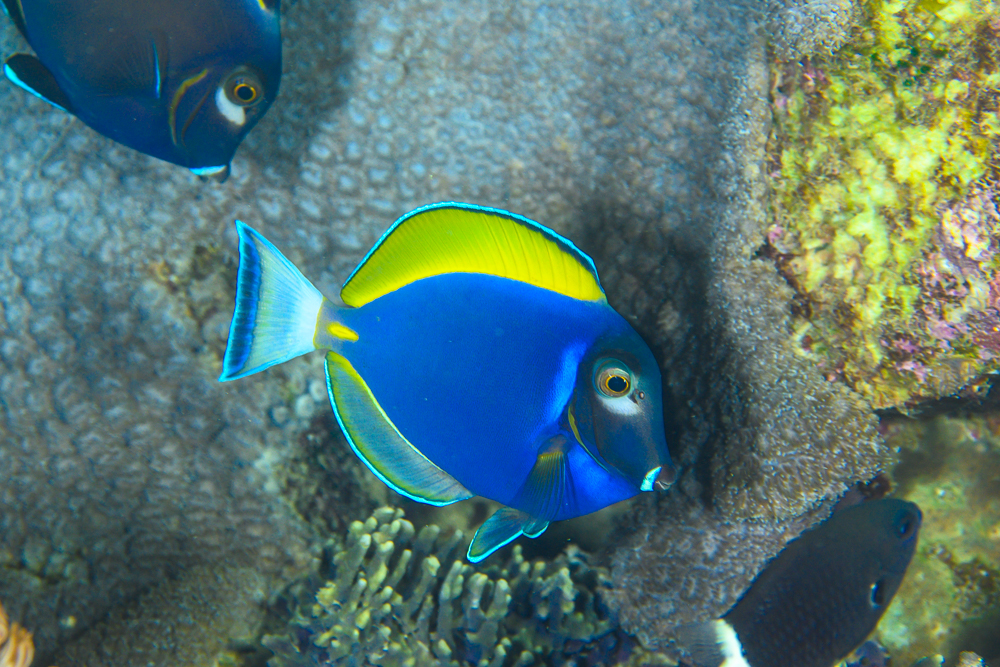
A wide range of slightly different color morphology:
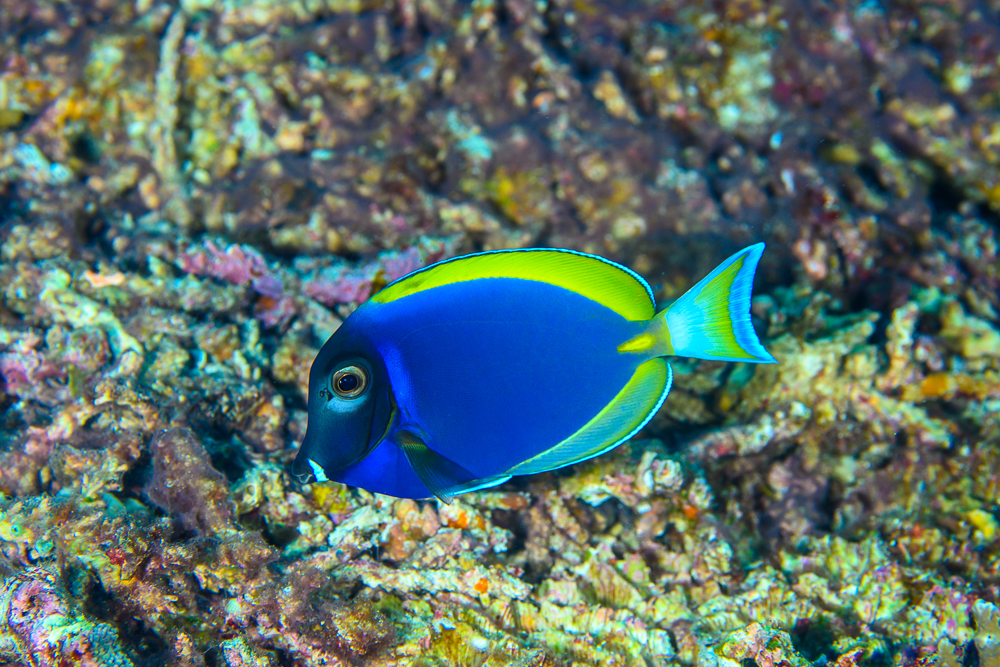
In the southeast of Bali, these hybrid tangs are quite common, but all of them have small coloration differences. Some of them are dark blue, retaining the darkness of the White Cheek parent. Some others keep the bright light blue color of the Powder Blue Tang. Some completely lack any white markings on their throat or cheek. The caudal fin can also have variation; some particularly beautiful specimens retain the yellow stripe of the Powder Blue Tang. And finally, the “unicorns” of hybrid ‘Starry Night’ Tangs have yellow dorsal and anal fins.
Like both parental surgeonfish species, this hybrid fish is not the easiest to acclimate and keep in an aquarium. However, it’s definitely a special fish that has the potential of becoming the centerpiece of any reef tank.

